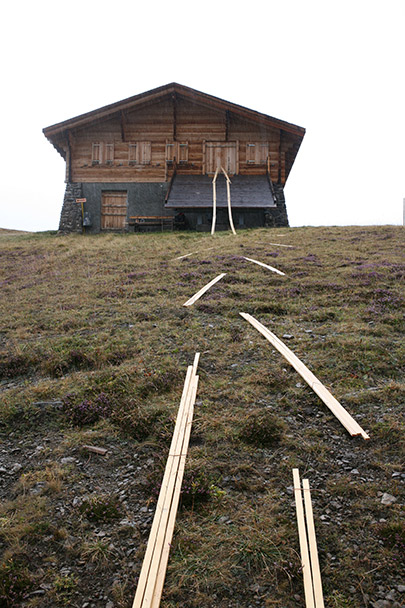 |
|
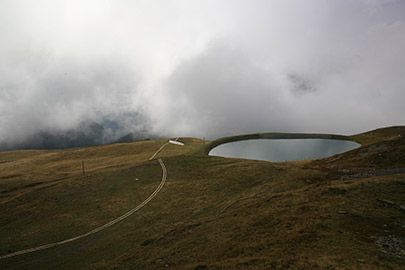 |
|
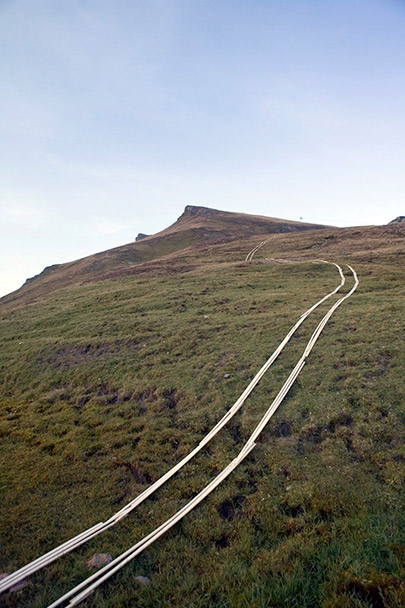 |
|
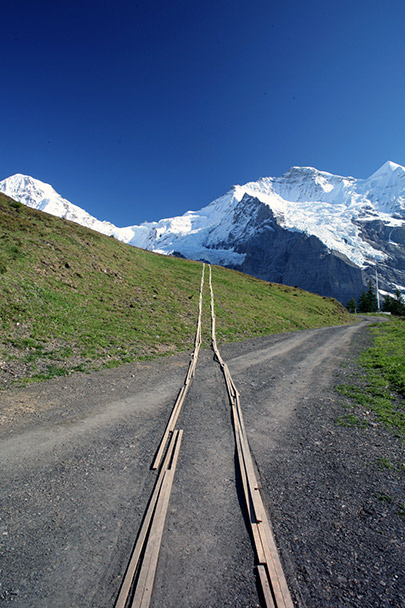 |
|
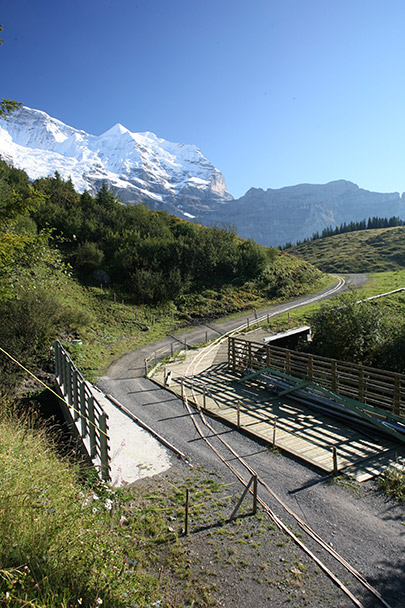 |
|
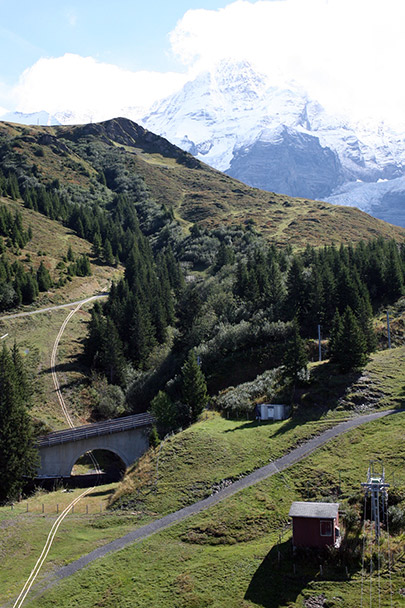 |
|
|
|
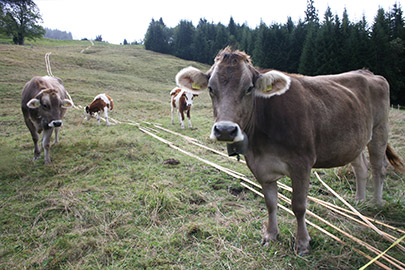 |
|
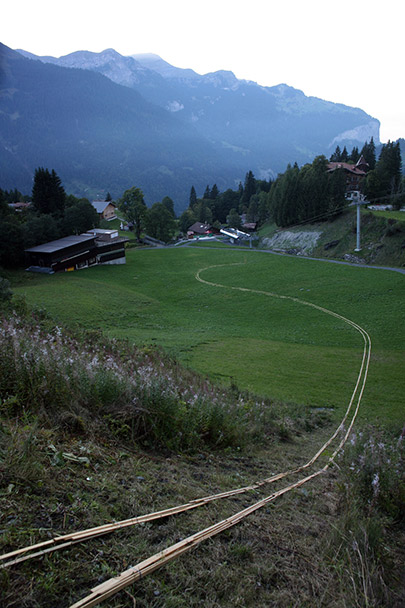 |
|
 |
|
 |
|
 |
|
 |
|
 |
|
 |
|
|
|
 |
|
 |
|
Art alone is capable of seeing the world always in a new light.
Paul Valéry
Since the beginning of the 1990s, Daniel Zimmermann has focussed on various means of artistically altering the perspective of space and its settings. Nature, landscapes and architecture are just as apt to be the center of his focus as everyday objects or sports settings, like his recent Olympic bobsled run in St. Moritz, and his newest project, involving the descent of the Lauberhorn ski race.
As is the case with all of Zimmermann's previous projects, he utilizes a specific methodology to implement the artistic concept for his Lauberhorn Ski Race in Summer project. Thousands of standardized wooden slats (an analogy of magic wands) are used to create a visual structure and field of perception: in this case, the ideal line of the Lauberhorn descent. The landscape is interposed in the installation, rendering the ideal line visible in a natural landscape, and also captured in media (in photographs and on film) as stereoscopic slides. 3-D-viewers are installed in situ at the camera locations, enabling an imaginary view of the real race course, which had been previously marked by the wooden slats.
In doing so, Zimmermann has developed new forms and possibilities of a type of Land Art which transcends nature's precedence. Nature, or the artistic reflection thereof via direct intervention and alteration, is not of paramount importance here, but rather images which emerge as a result of how nature is dealt with socially, culturally or technically. In a context such as the ski race, the natural landscape is no longer simply a natural landscape, but rather metamorphosed into a virtual backdrop: it becomes a ‘stage setting’ for the alpine sport spectacle and thus a contrary artistic intervention enabling new definitions and formulations of space.
Furthermore, temporality plays a multifaceted role: on the one hand, the inconsistency of the season (summer, not winter!) and, on the other hand, the perceptual discrepancy between virtual presence (in the film) and real absence (the wooden slats are no longer present in the landscape). This principle of deliberate disorientation leads to the striking clash of perceptions and is capable of suggesting a concurrent sense of time. These images of the Lauberhorn race diverge from those previously provided by the media for decades and are lost in a temporal no-man's-land. The mere fact that Zimmermann has used film as the medium for this project enables a further artistic level of perception: the ‘genre’ of staging with an authentic voice is yet another permutation of the Lauberhorn Race, practically deeming the original race a clone. This far transcends traditional and prevalent Land Art projects and enhances them as a media event.
With a delicate sense of irony, Zimmermann allows a subtle and inverse game of perception to unfold, not only between the real world and virtual reality, but also between nature and sport, clichés and authentic desire. Time and again, the artist allows our expectations and desires to clash with actuality, sometimes even to the point with which they implode. Hence, his summer Lauberhorn Race is also a metaphor and symbol for a short-circuit, as it were, regarding perception, be it in relation to nature or in its social or cultural utility. Pierre Bourdieu was right when he wrote that there is no innocent view of nature, that the genuine view is a social fairy tale. Without doubt, Daniel Zimmermann's works are, however, an unceasing attempt, if not a genuine attempt, at gaining a ‘purified’ view of our world and world-views.
Carl Aigner
Director of the Niederösterreichisches Landesmuseum, St. Pölten · Founding publisher of Kunstzeitschrift für Photographie & Neue Medien EIKON, Vienna · Chairman of ICOM Austria (International Council of Museums).
«They must be crazy, ...»
Viktor Gertsch
In 1930, skiers on wooden skis competed in the Lauberhorn Ski Race for the first time, contending for split-seconds and the top rank. Several years were necessary before the ideal line for the descent from Lauberhorn to Innerwengen was established.
Seventy-seven years later, the ideal line was sought again – but in summer. Artist Daniel Zimmermann, together with project manager Samuel Huber, wanted to emulate the ideal line with wooden slats, thus resulting in the Lauberhorn Ski Race in Summer art project.
A Lauberhorn Race in summer! They must be crazy to even think of having a race in summer, when it's already difficult to hold this event in winter. That's what we thought, together with many others; to us it seemed the art project with 10.000 wooden slats was an impossible feat.
The resolve on the part of the artist and the project manager was similar to that of the pioneers who held the first race on the Lauberhorn in 1930, and so convincing, that we approved their venture. And sure enough, they laid out 10.000 wooden slats along the ideal line – from start to finish. With interest and wonder, the artist, crew, locals - and even inquisitive goats and cows - all observed the progression of the project, with the latter even attempting to rearrange some of the wooden slats during the night.
On September 19, 2006, in conjunction with the opening of the Lauberhorn Ski Race in Summer art project, many locals and guests were also able to follow the ideal line in summer. Everyone had the opportunity to imagine the perfect line and fastest descent.
The Lauberhorn Ski Race in Summer is now over, the wooden slats have been removed and are ready for the artist's next project. What remains are the images from the 3-D-viewers positioned along the course, images which will be able to be seen for many years to come – in summer and winter alike. Moreover, a film with the speed of an all-time record is impressive for anyone who makes the imaginary descent together with the winner.
I would like to congratulate the artist and his entire crew on the success of their project and, on behalf of all of those involved, also express a special thanks to the sponsors for making it possible to carry out the summer race on the Lauberhorn.
Viktor Gertsch
President of the Verein Internationale Lauberhornrennen - Wengen.
Reinventing the Lauberhorn Ski Race
Max Triet
The Lauberhorn, the longest and most spectacular ski run in international skiing, attained icon status long ago. Recollections of the race link it with memorable experiences, including happy and tragic moments alike. Its distinctive stages bear names steeped in history, names which are coupled with victories and defeats, spectacular scenes and devastating falls. Every section of the course is paved with indelible memories and every name, ranging from Russi Sprung and Minsch Kante to the Ziel-S, evokes episodes from the past. Insiders who follow the Lauberhorn descent either live or on screen are almost as familiar as the ski racers with the faster and the slower, the easier and the more treacherous sections, which need to be analysed in sequence and perfectly negotiated. But only the downhill racer himself experiences the actual perspective. He is the one who chooses the perfect line, who either masters it or falls short of it. In addition, the level of training, scrutiny of the piste, his condition on the day, good judgment, and a measured amount of bravado are required. The Lauberhorn course is redrawn every year with tremendous effort and great expertise, with snow and weather conditions also necessitating constant modification. By means of Land Art, Daniel Zimmermann has succeeded in getting the crux of this unique phenomenon that has characterized the skiing world since 1930. His reduction to the essential and deliberate alienation, i.e. with the shift to summer, are utilized to recreate the Lauberhorn Race. The piste was analogously recreated to the lines of the winter course:
10. 000 wooden slats set in the contrasting green alpine meadows marked out Heinz von Allmen's and Bernhard Russi's perfect line. The race course is shot from the
perspective of the spectator as well as from that of the racer, thus visually captured in two forms. The stereoscopic footage shows the perfect wooden line using 3-D-viewers positioned next to the piste.
The entire course was run with the camera stride for stride and then compressed with a time accelerator, to coincide the running time with the course record. The background voice of the commentator from the real race conveys maximum authenticity. The spectator, otherwise predestined to assume a passive role, becomes the competitor here. At one with the artist, the spectator thus careens from the start to the finish and experiences the race course live, with its rapidly changing sections. Both in the film and through the individual viewing apparatuses, which are positioned in situ at significant points, the race itself re-emerges as illusion or virtual reality, thus enabling everyone to experience the race course and descent as a whole or in parts. Freed from the usual season the race is held in, the Lauberhorn Race in Summer provides us with a deeper appreciation of this queen of downhill racing. Therein lies the quintessence of this challenging production, which is designed for long-term effect.
Max Triet
Former Director of the Swiss Sports Museum, Basel.
www.lauberhornrennenimsommer.ch